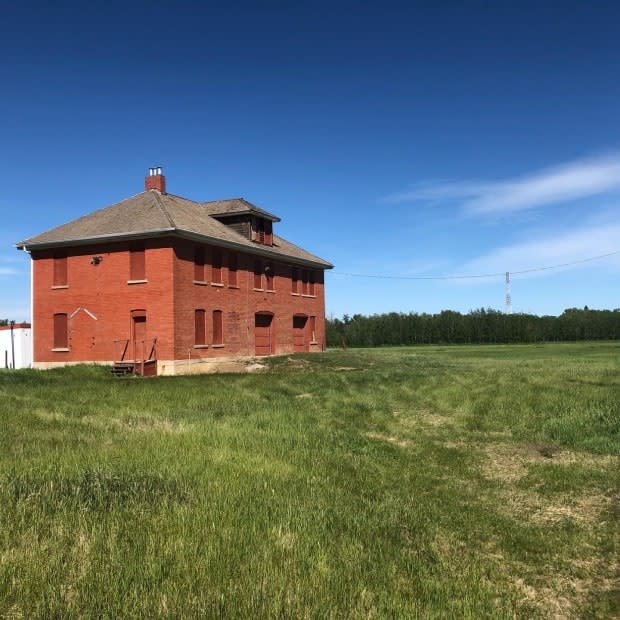Search for Alberta unmarked residential school burial sites complex work, advocates say

WARNING: This story contains details some readers may find distressing.
Securing funding is just one of many hurdles to overcome while searching for answers about children who never came home from residential schools, say people who do the work.
Alberta Premier Jason Kenney announced on Wednesday the province would make $8 million available in grants to Indigenous communities and groups to study potential unmarked burial sites, conduct archival research or install commemorative monuments.
Indigenous leaders attending the Edmonton announcement lauded the flexibility of the grants, which will give applicants up to $150,000 for work such as ground-penetrating radar exploration, interviewing elders or partnering with experts to locate remains.
Combined with federal grant funding from another $27-million pool, it could give communities a strong start on this complex work, said Kisha Supernant, a University of Alberta archeology professor who helps Indigenous communities search burial sites.
She hopes the funding can also be used for training and empowering Indigenous people to do the research, and counselling for the inevitable trauma it triggers.
"Spiritual supports, cultural supports, mental health supports are essential in this work, because it is, speaking from experience, extremely difficult to do," she said.
Archeologists and private companies could gather data from underground, she said. Archeologists are working on a set of standards to ensure such searches are consistent, she said.
The bottleneck comes in interpreting the data, which a limited number of experts are trained to do.
There could also be hundreds of potential places to look in Alberta, should communities be willing. There were 25 residential schools, some of which operated on multiple sites.
Those numbers don't include day schools or boarding schools outside the federal government's purview, which may also have burial sites, Supernant said.
Inaccessible records, private land more hurdles to searches
Eleven former residential schools were located in northern Alberta in Treaty 8 territory.
Some communities are more prepared than others to begin ground searches, says Grand Chief Arthur Noskey.
Adding to the complexity is the mixture of ownership of the land of former sites, he says.
Two schools, St. Peter's and St. Bernard's, operated for decades in Grouard, near High Prairie. Hundreds of children passed through those schools, Noskey said.
After preliminary findings from a survey using ground-penetrating radar at a former Kamloops residential school site last month suggested the remains of 215 children are buried there, an elder approached Noskey.
He remembers construction workers finding human bones years ago on one of the Grouard school sites.
Noskeyis also frustrated by the reluctance of churches and government to share some of the archival records that could help communities track the fate of some children.
"Treaty 8 is going to strategize," he said. "Hopefully to bring closure to this process. To this history."

Lyle Keewatin Richards, vice-president of the Remembering the Children Society, hopes his group will qualify for some of the new provincial funding.
Since 1987, the society has investigated the fates of Indigenous children who never returned from the Red Deer Industrial School. It closed in 1919.
Initial radar work in 2005 and 2006 found the remains of 42 children in an unmarked graveyard, and another location, he said. But the surveys found evidence of more potential secrets underground, he said.
The organization wants to study more sites with newer technology, he said.
"We don't know what we don't know," he said. "We don't know how many kids are there. We don't know how many kids went there. We don't know how many kids died. We thought we had a clean, nice clean number, but Kamloops has taught us that we don't know."
At the Wednesday news conference, Indigenous leaders said they will hold ceremonies with elders and other community members to best determine how grant funding should be spent on searches.

 Yahoo Finance
Yahoo Finance 